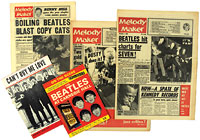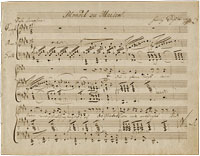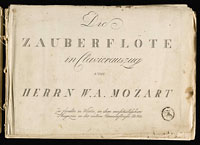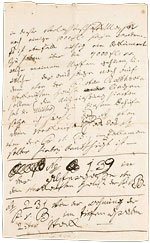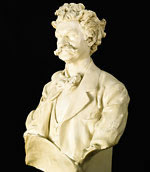The Beginnings of Beatlemania
A run of Melody Maker and Beatles memorabilia, Comic Book Auctions of London on March 2, £462 ($690).
Founded in 1926, the original focus of this pioneering British weekly was jazz but come the 1950s and the rock and roll era, MM found itself losing out to a rival, New Musical Express, and somewhat belatedly changed musical direction. These were publisher’s file copies from a 1963 run that lacked three of that year’s issues but did include the March 23 copy, the first to feature the Beatles on the cover in the year that saw the birth of Beatlemania. Also part of the lot were copies of the sheet music for “Can’t Buy Me Love” and an English illustrated booklet about their 1964 appearance at New York’s Carnegie Hall.
Previews
The following lots will all feature in a specialist sale of Printed and Manuscript Music to be held by Sotheby’s of London on June 9.
A Schubert Song Rediscovered in C-Sharp Minor
Franz Schubert, signed autograph manuscript of the song Blondel zu Marien, D. 626, estimate £40,000-60,000 ($61,120-91,680).
Containing significant differences from all other known editions and copies, this manuscript has been unavailable to scholars and effectively missing since it last passed through the same salerooms in 1935.
Here it is notated in the key of C-sharp minor, whereas all other early sources, including the manuscript version now in the Gesellschaft der Musikfreunde in Vienna and the first printed edition of 1842, have the song in C minor. Signed and dated by the great man, this version of his 1818 song for Richard the Lionheart’s troubador differs in many details from published editions in both the vocal line and piano accompaniment. The three-page manuscript also includes the start of an unidentified march in G major for piano and unidentified solo instrument.
The Magic Flute, Bit by Bit
Wolfgang Amadeus Mozart, an incomplete first edition set of the vocal score numbers of Die Zauberflöte, 1791-93, estimate £5,000-7,000 ($7,640-10,700).
The Magic Flute was such a hit when first performed on September 30, 1791, that three Viennese publishers—Kozeluch, Artaria, and Hoffmeister—competed for the right to cash in on demand for scores.
Mozart, who died ten weeks later, did not reap the rewards he deserved, but even before he died, Kozeluch had begun to issue various parts of the vocal score, each with its own title page and individually paginated. Though these can now be numbered 1-38, they were not issued in that order – the first two numbers to be issued being no. 8, “Bey Männern,” and no. 23, “In diesen Heil’gen Mauren.”
Though this first edition set—stained, well thumbed and partly loose in a broken binding—lacks five numbers, including the Overture and Papageno’s famous Aria der Vögelganger, it does include the earliest parts to appear, all complete with title pages.
Beethoven Fights For His Nephew’s Rights
Ludwig van Beethoven, autograph draft of a letter about his nephew, Karl, estimate £30,000-40,000 ($45,840-61,120).
Beethoven’s intense and sometimes difficult relationship with Karl really began in November 1815, when he was just eight years old. Following the death of his brother, Ludwig decided to contest Casper Carl’s last minute stipulation that Ludwig and the boy’s mother, Joanna von Beethoven, should be co-guardians.
Ludwig regarded Joanna, who had previously been lucky to escape imprisonment for embezzlement, as a treacherous woman, and on occasion would refer to her as the Queen of the Night, a reference to the character in Mozart’s opera Die Zauberflöte. Years of legal wrangling and bitter family fighting followed, and the situation was only finally resolved when Joanna’s final petition to the emperor was rejected.
The composer’s lawyer at this period was Dr. Johann Baptist Bach, and it is assumed that this letter, in which he impresses on his un-named correspondent the need to prevent delay and chicanery in the matter of family bequests and inheritances due to his nephew, was addressed to Dr. Bach. A characteristically combative and forceful letter, it bears no date but various references point to Vienna and the year 1821.
Strauss Gets Plastered
Plaster bust of Johann Strauss II by Viktor Tilgner, 1894, estimate £7,000-9,000 ($10,700-13,750).
The Sotheby’s sale will doubtless have its share of musical quotations and signed portraits, but here we have a more substantial image. The preferred sculptor of Viennese society in the latter part of the nineteenth century, Tilgner was also a good friend of the Waltz King, the splendidly be-whiskered creator of such favourites as the Blue Danube Waltz, Tales from the Vienna Woods, the opera Die Fledermaus, and so much more.








 Ian McKay’s weekly column in Antiques Trade Gazette has been running for more than 30 years.
Ian McKay’s weekly column in Antiques Trade Gazette has been running for more than 30 years.